Are We as Customer-centric as We Think?
We marketers like to say we are customer-centric. We give “customer centricity” and “customer experience” the nod in our public commentaries. The Google Trends search trend pictured below shows a marked increase in “customer-centric” searches, which indicates that many of us are on board with this concept.

However, is that the reality in our day-to-day lives as marketers?
We come up with wonderful slogans, mantras and mission statements, all proclaiming we put customers at the center of our marketing plans. Still, the truth of the matter is that only 56% of marketers base their strategic planning on business needs instead of new features.
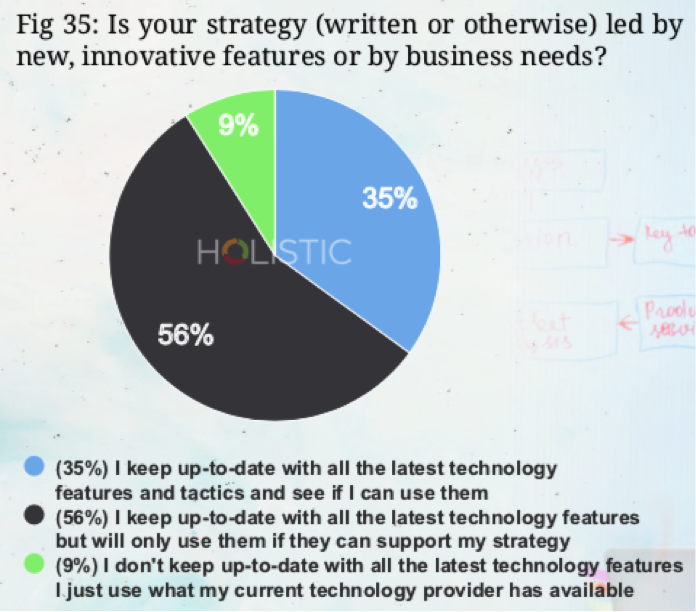
But, wait! This chart is talking about business needs, not customer-centricity. Why did I cite it? Because business and customer focus can be one and the same.
We marketers think of “business needs” as balance sheets and bottom lines. And we need to do so – to a certain extent. But it’s short-sighted.
The magic happens when we help our customers achieve their needs and objectives. By default, that helps us achieve our needs and objectives!
My company also performed some research looking at customer experience within email marketing. We found that the majority of promotional emails were not very customer-centric.
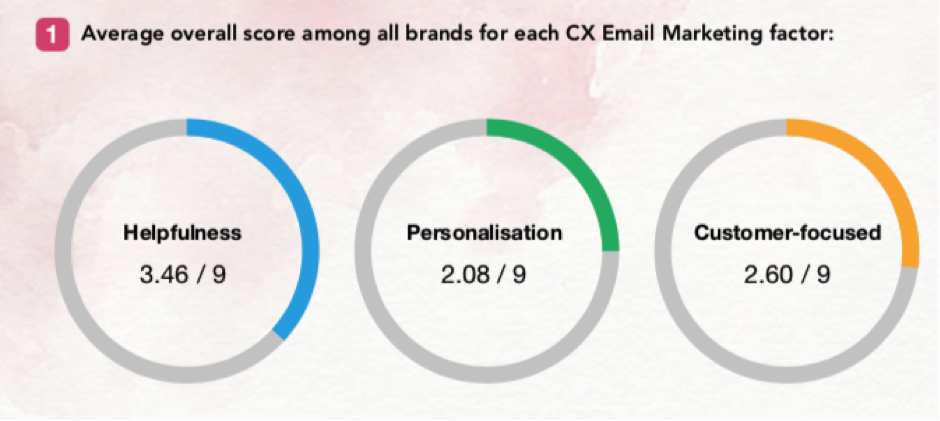
However, being customer-centric involves far more than just the messaging that we’re sending out via email. It encompasses everything we do – from creating a strategy, to the terminology we use, and everything in between.
We also discovered that only 45% of marketers have a definitive strategy.
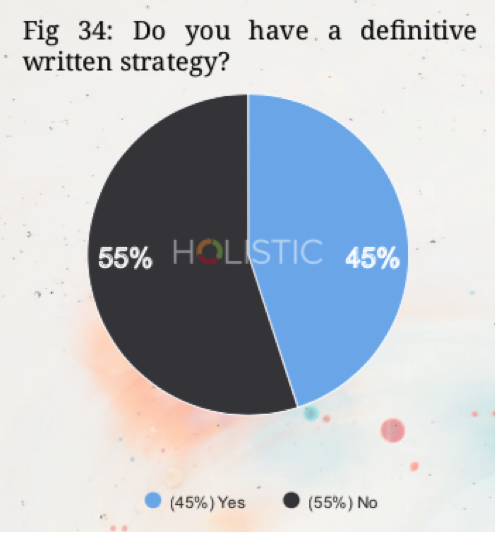
Without a definitive strategy, we leave ourselves open to creating email programmes that are led by technology instead of strategy, and that can lead us far down the wrong path, away from being customer-centric.
Don’t get me wrong – I love that we email marketers have some of the most advanced marketing technology available to us. Technology is our friend, and we rely upon it to deliver on our strategies. But, when we allow technology to drive our decisions, we expect technology to teach us how to market to our customers.
We need to retain control, put our marketing hats on and put technology in service to our goals instead of using it just because we can.
Who’s in charge here?
Some of the most influential blogs in the email industry are produced by technology vendors. They’re well written, timely and full of helpful information. But the terminology found in these blog posts serves to tell the vendors’ narratives, not ours. We adopt that terminology, and it becomes the norm.
For example, why do we say “Marketing Automation” more often than the more marketer- and customer-focused “Lifecycle Marketing?”
I’m not blaming the vendors for coming up with self-serving names and phrases – not at all. It’s natural for them to do so, but it doesn’t mean that we marketers have to follow suit and fall in with these terms.
As we can see in the chart below, “Marketing Automation,” which tech vendors champion, is searched far more often than “Lifecycle Marketing,” which is a more accurate term for marketers to use.

Both of these terms describe the same thing. However, “Marketing Automation” is the “how” and causes you to focus on the technology, whereas “Lifecycle Marketing “is the “what” and causes the marketer to focus on the customer.
It may seem that I’m being pedantic, but this is important. We’ve all heard the stories of cars crashing into broken-down cars on the side of the road on freeways. This is because the driver is looking at the broken-down car and they inadvertently steer their car towards it. What you look at/focus on, matters.
If you are a customer-centric marketer, then “Lifecycle Marketing,” should be your chosen terminology, as it’s all about the customer. It may not seem like much, but it indicates how easy it is to think in technology terms before customers.
Adding to this dilemma, MarTech is growing
Gartner’s CMO Spend Survey puts MarTech at 29% of marketing budgets (excluding agency fees) compared with 24% on staff payments.
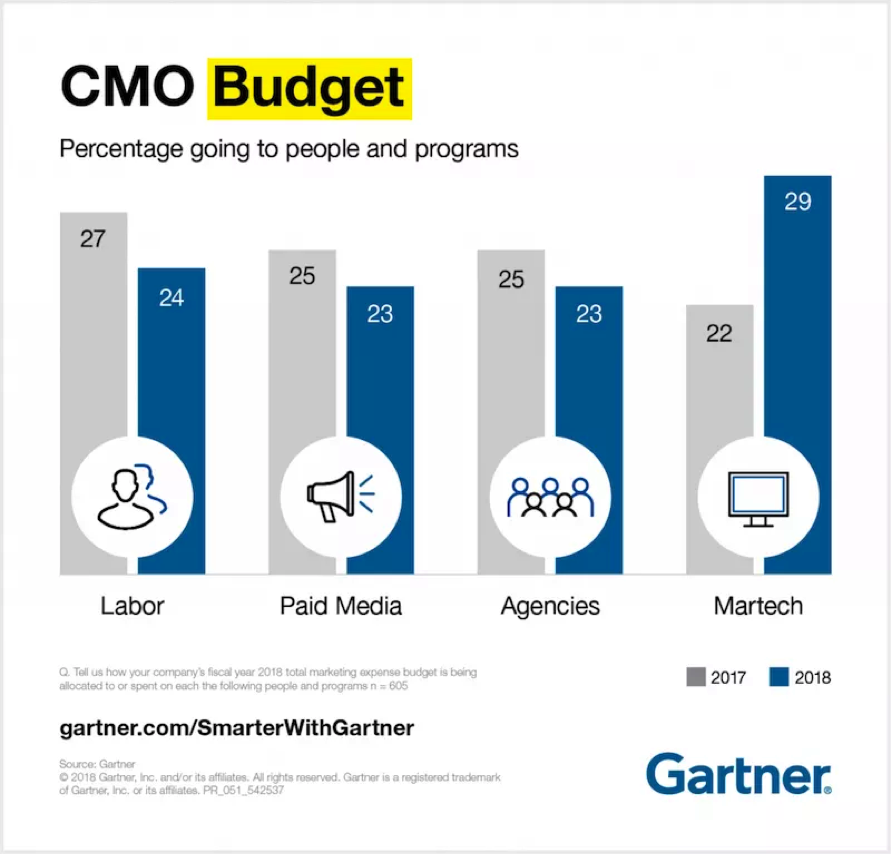
We tend to focus on where our budget is being spent. If it’s with MarTech, then that’s where we focus. In this situation, it’s easy to let technology lead our strategy, as we’ve invested so much in it.
But, we need to remember who the most important factor is for our company, and it’s not technology. It’s the customer.
Technology focus can distract us from our customer-centric objective
Although email marketing is the easiest and most cost-effective channel to test, many email marketers don’t test often enough, or effectively, to find out what works and roll out the results to other channels.
For example, even though personalisation as a strategy is on the rise with email marketers, only 60% of email marketers say they have tested whether using personalisation really delivers an uplift.
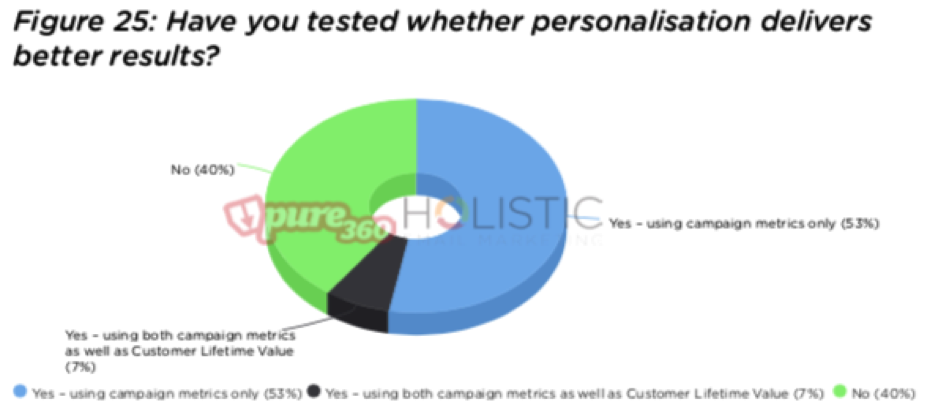
Many of us have learned how to test by using the testing features within our email marketing platforms. However, this is only part of what is needed to succeed in testing.
That’s why, when querying email marketers as to whether they test, they say no, that they tried it and it didn’t give them an uplift.
This is what happens when we rely on technology to do our jobs for us.
Testing requires us to think like scientists as well as marketers. At a very minimum, we should create a hypothesis, identify what to test, determine the most accurate success factors to base it on, use the technology to perform the test, calculate whether the results are statistically significant, and record the results and conclusions, as well as the recommendations for using those findings.
In summary: Technology has given us wonderful tools, but we must use them strategically
I love how far we in email have come since I’ve been in the industry in the past 20 years. Much of that growth has been fuelled by the explosion of useful technology that allows us to send more meaningful and valuable email to our customers.
But it’s too easy to forget that our success doesn’t ride on being able to use the newest and most leading-edge technology. It’s choosing the right tools according to the strategies we employ to achieve our ultimate objective – serving our customers’ needs in ways that support our own business needs and goals.
We marketers – and our companies – must remember that we succeed only when our customers do. We can’t let technology dictate the strategy and then just cross our fingers and hope it works.
Instead, we need to recast our approach – to focus on our customers and their needs, to let strategy dictate which tools are most appropriate and then to test and measure the results.
If customer centricity is truly our objective, we need strategies to help us achieve it. Technology, no matter how serviceable, is not the strategy. It’s the tool we use to implement the strategy that will help us achieve the objective.
Originally posted on Only Influencers
While many marketers claim to be customer-centric, reality often falls short of the ideal. By re-evaluating our strategies and focusing on truly meeting customer needs, we can create more effective and engaging email campaigns. This article examines common gaps in customer-centric marketing and offers practical steps to improve.
Want to ensure your email marketing strategy is genuinely customer-centric? Contact Holistic Email Marketing today for expert guidance on creating campaigns that truly resonate with your audience.

